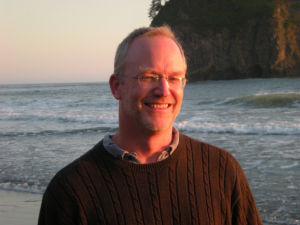Harvey Seim

Professor
harvey_seim@unc.edu(919) 962-2083
(919) 962-1254
3117G Murray Hall, CB#3300
Google Scholar Profile
Curriculum vitae (CV)
Education
Ph.D. Oceanography, University of Washington, 1993
Research Interests
Physical oceanography; observing systems; coastal oceanography; shelf-open ocean exchange; marine meteorology; boundary layer processes
Research and Activities
Recent Projects North Atlantic Dynamics – Developing and Exploiting a Long-Term Cape Hatteras Gulf Stream Time Series – this project, beginning October 2021, is an NSF-funded study to investigate the wide-reaching causes and consequences of Gulf Stream (GS) variability in the Cape Hatteras region. Objectives are to 1. Reprocess historical radial velocity data from the HFR array at Hatteras and analyze these data to create a time history of GS characteristics off Cape Hatteras; 2. Test hypotheses about the controls on and consequences of the Gulf Stream (position, path and structure) for processes ranging from event- to interannual-scales, using this time history with other long, observation-based time series in the North Atlantic. The project is a collaboration with investigators at the Woods Hole Oceanographic Institution and the Coastal Studies Institute (East Carolina University). Participation in the Southeast Atlantic Coastal Ocean Observing Regional Association (SECOORA) – operation of high-frequency radar and gliders (www.secoora.org) – as part of this largely NOAA-funded activity, we have operated the surface current-mapping radar system on the Outer Banks of NC since 2003 and are a member of the SECOORA glider observatory consortium. SECOORA delivers near real-time observations to regional and national data repositories to support marine operations, coastal hazards preparedness and climate variability awareness, and ecosystem studies of water quality and living marine resources. The Processes driving Exchange At Cape Hatteras (PEACH) Program – is an NSF-funded study of the processes that drive seawater exchanges between the continental shelf and open ocean in a region of persistent along-shelf flow convergence near Cape Hatteras, North Carolina. The collaborative effort includes researchers from Woods Hole Oceanographic Institution, North Carolina State University, Skidaway Institute of Oceanography (University of Georgia) and the Coastal Studies Institute (East Carolina University). The Seim Lab led or participated in a number of the observing components, including high-frequency radar mapping of surface currents, meteorological buoys, bottom moorings holding ADCPs and CTDs and glider surveys. The field program ran April 2017-November 2018 and the emphasis at present is on analysis of the observations collected. Lake nutrient management studies – we are examining the circulation of local reservoirs (Jordan and Falls Lake) to complement other studies exploring nutrient management strategies for these waterbodies. Current profilers and temperature logger mooring strings have been deployed at choke-points in the lakes to observe flow patterns under various forcings. This work is supported by the NC Policy Collaboratory and done in coordination with Dr. Luettich’s Lab at the Institute for Marine Sciences. Galapagos archipelago microbial surveys –the Seim lab has supported and participated in a series of fall cruises to survey environmental conditions and the marine microbial community across the archipelago, led by Dr. Marchetti and in collaboration with Dr. Gifford, both faculty in EMES. Analyses are focused on relating variations in microbial abundance and community structure to environmental conditions.
